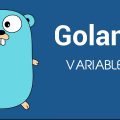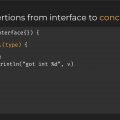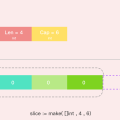整型
整型是所有编程语言里最基础的数据类型,Go 语言默认支持如下这些整型类型:
| 类型 | 长度(单位:字节) | 说明 | 值范围 | 默认值 |
|---|---|---|---|---|
int8 | 1 | 带符号8位整型 | -128~127 | 0 |
uint8 | 1 | 无符号8位整型,与 byte 类型等价 | 0~255 | 0 |
int16 | 2 | 带符号16位整型 | -32768~32767 | 0 |
uint16 | 2 | 无符号16位整型 | 0~65535 | 0 |
int32 | 4 | 带符号32位整型,与 rune 类型等价 | -2147483648~2147483647 | 0 |
uint32 | 4 | 无符号32位整型 | 0~4294967295 | 0 |
int64 | 8 | 带符号64位整型 | -9223372036854775808~9223372036854775807 | 0 |
uint64 | 8 | 无符号64位整型 | 0~18446744073709551615 | 0 |
int | 32位或64位 | 与具体平台相关 | 与具体平台相关 | 0 |
uint | 32位或64位 | 与具体平台相关 | 与具体平台相关 | 0 |
uintptr | 与对应指针相同 | 无符号整型,足以存储指针值的未解释位 | 32位平台下为4字节,64位平台下为8字节 | 0 |
Go 支持的整型类型非常丰富,你可以根据需要设置合适的整型类型,以节省内存空间,此外 int 和 int32 在 Go 语言里被认为是两种不同的类型(同理,int 和 int64 也是不同的类型),编译器也不会帮你自动做类型转换,比如以下的例子会有编译错误:
var intValue1 int8 intValue2 := 8 // intValue2 将会被自动推导为 int 类型 intValue1 = intValue2 // 编译错误
编译错误类似于:
cannot use intValue2 (type int) as type int8 in assignment
使用强制类型转换可以解决这个编译错误:
intValue1 = int8(intValue2)) // 编译通过
注:关于类型转换我们在后面介绍完所有数据类型后会单独介绍。
我们还可以通过 intValue := uint8(intValue2) 这种方式同时完成类型转化和赋值操作。
此外,和其他编程语言一样,可以通过增加前缀 0 来表示八进制数(如:077),增加前缀 0x 来表示十六进制数(如:0xFF),以及使用 E 来表示 10 的连乘(如:1E3 = 1000)。
运算符
算术运算符
Go 语言支持所有常规的整数四则运算:+、-、*、/ 和 %(取余运算只能用于整数),不过由于强类型的关系,在 Go 语言中,不同类型的整型值不能直接进行算术运算,比如下面这样计算就会报编译错误:
intValue3 := intValue1 + intValue2
编译错误信息如下:
invalid operation: intValue1 + intValue2 (mismatched types int8 and int)
类型转化之后就好了:
intValue3 := intValue1 + int8(intValue2)
如果你是从动态语言转过来学习 Go,在刚开始写代码时尤其要注意这些因为类型问题产生的 bug。
在 Go 语言中,也支持自增/自减运算符,即 ++/--,但是只能作为语句,不能作为表达式,且只能用作后缀,不能放到变量前面:
intValue1++ // 有效,intValue1 的值变成 9 intValue1 = intValue1++ // 无效,编译报错 --intValue1 // 无效,编译报错
还支持 +=、-=、*=、/=、%= 这种快捷写法:
intValue1 += intValue1 // 18 intValue1 -= intValue1 // 0 intValue1 *= intValue1 // 81 intValue1 /= intValue1 // 1 intValue1 %= intValue1 // 0
比较运算符
Go 语言支持以下几种常见的比较运算符: >、<、==、>=、<= 和 !=,比较运算符运行的结果是布尔值。
如上篇教程所说,Go 是强类型语言,不同类型的值不能放在一起比较,否则会报编译错处:
if intValue1 == intValue2 {
fmt.Println("intValue1 和 intValue2 相等")
}
相同类型的值才可以:
if intValue1 < intValue3 {
fmt.Println("intValue1 比 intValue3 小")
}
由此可见,所有比较运算符在比较的时候都会考虑进数据类型的因素,所以不需要额外引入类似 PHP 等动态语言中的 === 和 !== 这种严格比较运算符。
不过,各种类型的整型变量都可以直接与字面常量进行比较,比如:
if intValue1 == 8 {
fmt.Println("intValue1 = 8")
}
位运算符
位运算符以二进制的方式对数值进行运算,效率更高,性能更好,Go 语言支持以下这几种位运算符:
| 运算符 | 含义 | 结果 |
|---|---|---|
x & y | 按位与 | 把 x 和 y 都为 1 的位设为 1 |
x | y | 按位或 | 把 x 或 y 为 1 的位设为 1 |
x ^ y | 按位异或 | 把 x 和 y 一个为 1 一个为 0 的位设为 1 |
^x | 按位取反 | 把 x 中为 0 的位设为 1,为 1 的位设为 0 |
x << y | 左移 | 把 x 中的位向左移动 y 次,每次移动相当于乘以 2 |
x >> y | 右移 | 把 x 中的位向右移动 y 次,每次移动相当于除以 2 |
我们可以做一些简单的测试:
var intValueBit uint8 intValueBit = 255 intValueBit = ^intValueBit // 按位取反 fmt.Println(intValueBit) // 0 intValueBit = 1 intValueBit = intValueBit << 3 // 左移 3 位,相当于乘以 2^3 = 8 fmt.Println(intValueBit) // 8
逻辑运算符
Go 语言支持以下逻辑运算符:
| 运算符 | 含义 | 结果 |
|---|---|---|
x && y | 逻辑与运算符(AND) | 如果 x 和 y 都是 true,则结果为 true,否则结果为 false |
x || y | 逻辑或运算符(OR) | 如果 x 或 y 是 true,则结果为 true,否则结果为 false |
!x | 逻辑非运算符(NOT) | 如果 x 为 true,则结果为 false,否则结果为 true |
逻辑运算符计算的结果也是布尔值,通常我们可以组合使用逻辑运算符和比较运算符:
if intValue1 < intValue3 && intValue1 == 8 {
fmt.Println("条件为真")
}
运算符优先级
上面介绍的 Go 语言运算符优先级如下所示(由上到下表示优先级从高到低,或者数字越大,优先级越高):
6 ^(按位取反) ! 5 * / % << >> & &^ 4 + - | ^(按位异或) 3 == != < <= > >= 2 && 1 ||
++ 或 -- 只能出现在语句中,不能用于表达式,故不参与优先级判断。






学习打卡
学习打卡